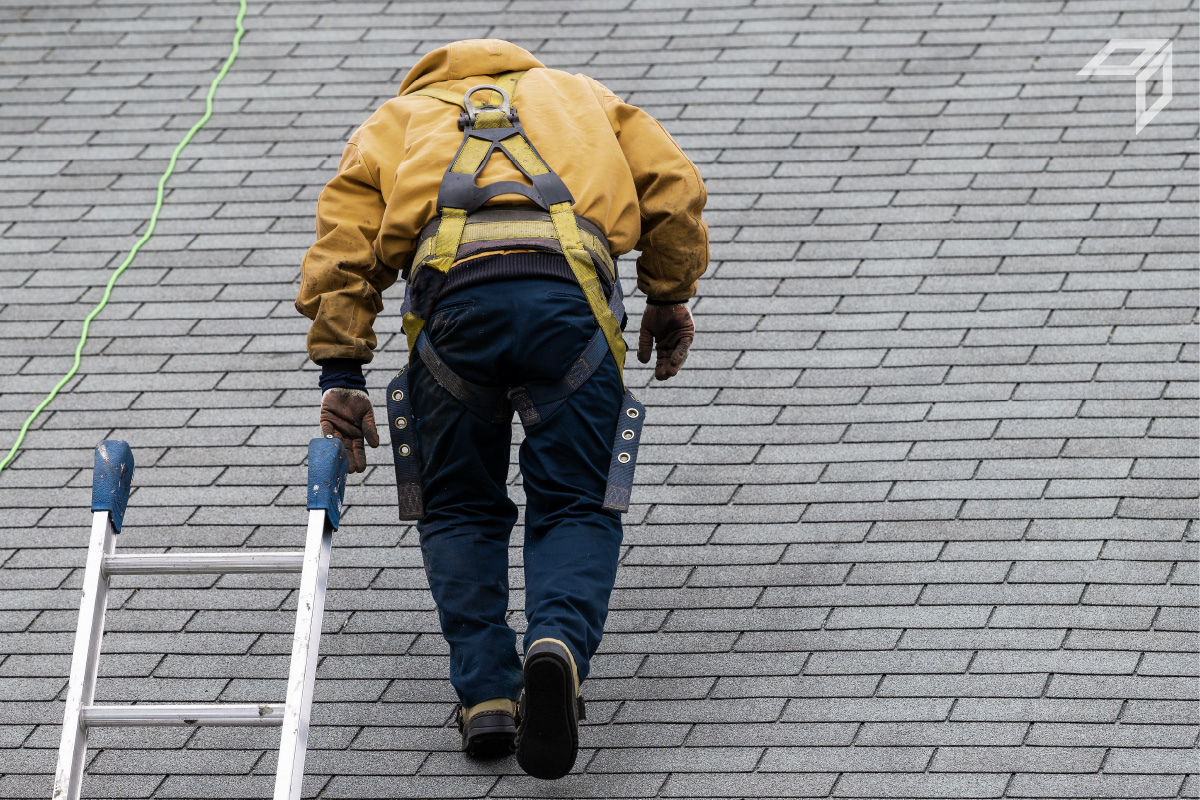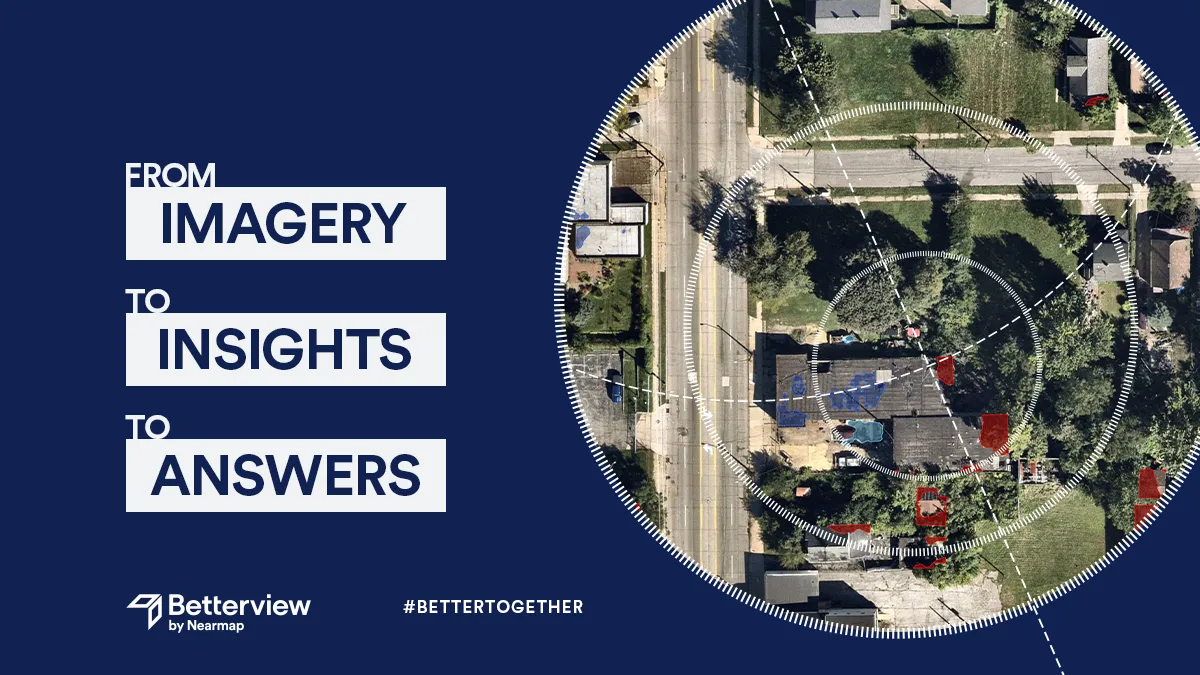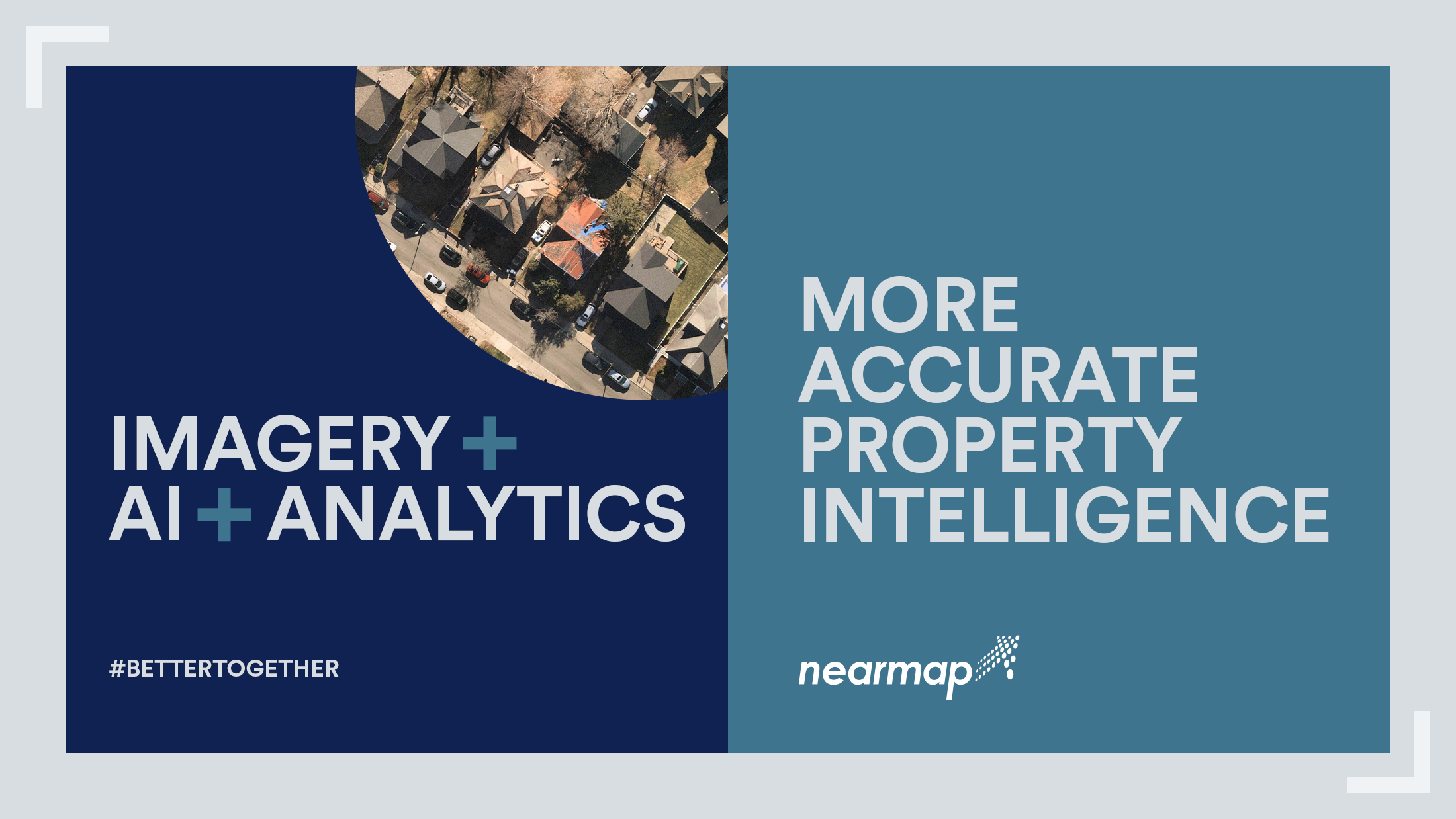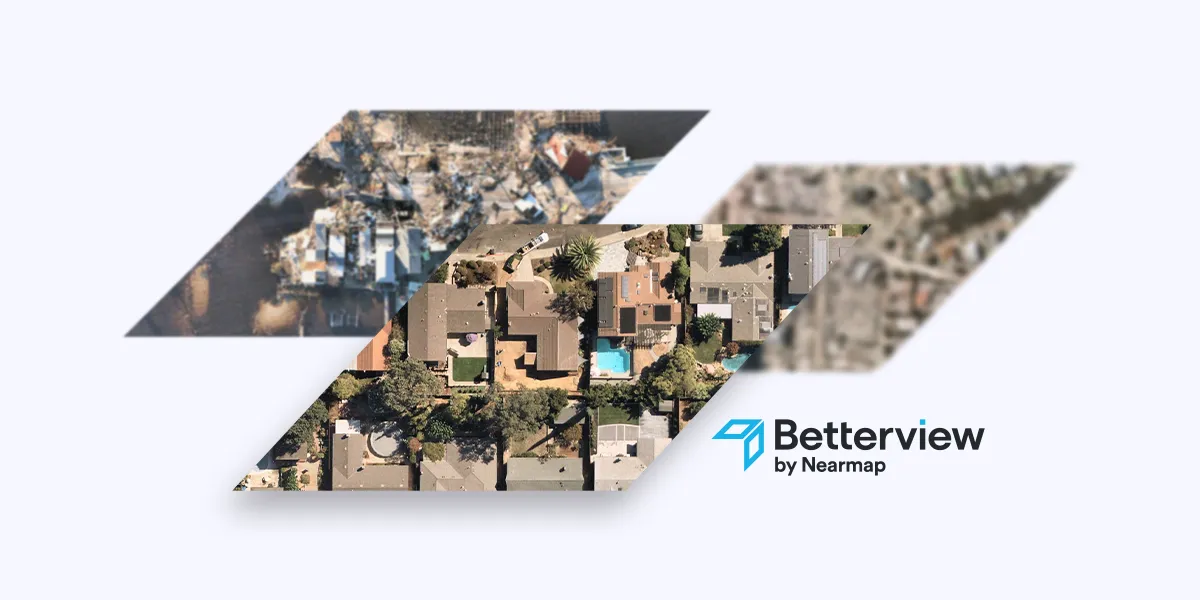From Imagery to Insights to Answers
What does the Nearmap acquisition of Betterview mean for the insurance industry?
3 min read
 Dave Tobias
:
Mar 1, 2023 8:30:00 AM
Dave Tobias
:
Mar 1, 2023 8:30:00 AM

P&C insurance companies are always looking for ways to improve their expense ratio, especially during unpredictable economic times. This means cutting back on unnecessary spending and auditing processes to see where there may be bottlenecks and inefficiencies. I believe that one area that is ripe for automation and optimization is physical property inspections.
This is a field where I have a great deal of experience. My father owned a property inspection business, and I worked there for many years early in my career before taking over its expansion and eventual sale. I experienced firsthand how much work goes into performing a rigorous property inspection – but I also experienced the problems inherent to that industry, and the ways that physical inspections fall short of insurers’ actual needs. When I founded Betterview along with David Lyman, optimizing the inspection process for P&C insurers was one of our top priorities.
The Limitations of Physical Inspections
Don’t get me wrong, in-person inspections certainly have a place in the P&C insurance business. After all, there is benefit from having a human view a property, on-site. But for too long insurers have relied on physical inspections as their only view of property condition. In my mind, this foregoes the advantages to using a more technologically driven approach. It also ignores the problems inherent to physical inspections. Problems such as:
These are a few fundamental challenges with physical inspections, challenges that add time to underwriting workflows and add unnecessary expenses to the bottom line for insurers. But obviously, insurers need verification of property condition. So, what are some solutions?
Automation & Aerial Imagery
Through a combination of aerial imagery, computer vision tools, and third-party data, Betterview uses automation to solve for the limitations of physical inspections for insurers. Let’s look more closely at the technology that makes this possible.
On-demand aerial imagery available on the Betterview platform provides accurate visuals on nearly every property in the United States in as little as 2 seconds. This imagery can capture roof condition and overall property condition with much greater precision than the naked eye alone. It also has many advantages over preprocessed imagery, which is generally not current and is also costly to update. Instead of spending up to three months waiting for an inspection, insurers can instead view real property condition in seconds. This has obvious benefits for underwriters, who can make rapid decisions informed by accurate, up-to-date imagery.
Computer Vision and Third-Party Data
Another advantage of the Betterview platform is the specific insights made possible through computer vision tools and third-party property intelligence. Using dozens of models and classifiers, our platform can determine the exact level of risk of a property based on the presence of common maladies such as roof staining, ponding, missing shingles, and more. These disparate maladies are combined into a single, transparent risk score for every property – the Roof Spotlight Index (RSI). Insurers can also access a wealth of third-party data from industry-leading companies through Partner Connect. Featuring datasets and insights from e2Value, Guidewire, and Equifax among others, PartnerHub helps to complete insurers’ picture of overall risk for every property in their book.
All of these tools set up insurance companies for success even before an inspection has been ordered. At the beginning of the underwriting process, underwriters can run properties through our platform and flag those that meet certain requirements. For example, they may want to flag all properties with a low RSI that are located in a region prone to natural disasters. They can then straight-through-process all properties that are a low enough risk, and send physical inspection teams to those that are a higher risk. In this way, inspections are used strategically for specific properties rather than being the default. This leads to cost savings and operational efficiencies that are good for carriers, agents, and insureds.
As the nature of global risk becomes more unpredictable, insurance companies need to pursue new strategies to improve their combined ratio while still providing quality service to their customers. By optimizing inspection efficiency with the tools available on our platform, insurers can reduce expenses while simultaneously attaining a highly accurate, actionable view of real property condition. The result is a more efficient and a better policy experience for all parties involved.

What does the Nearmap acquisition of Betterview mean for the insurance industry?

The insurance industry, and the technology that supports it, have seen significant change over the last few years. New technology continues to come...

What are the key trends challenging P&C insurers in 2024?